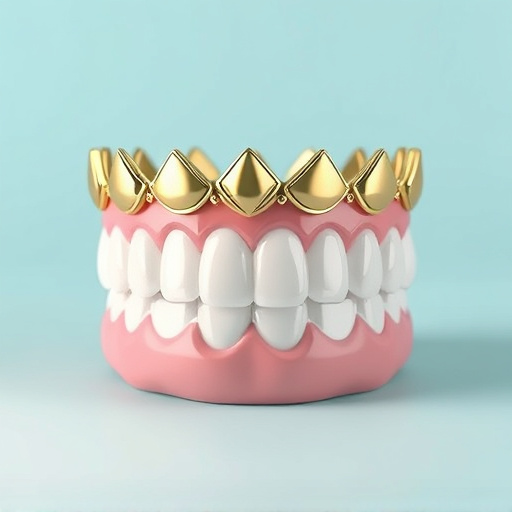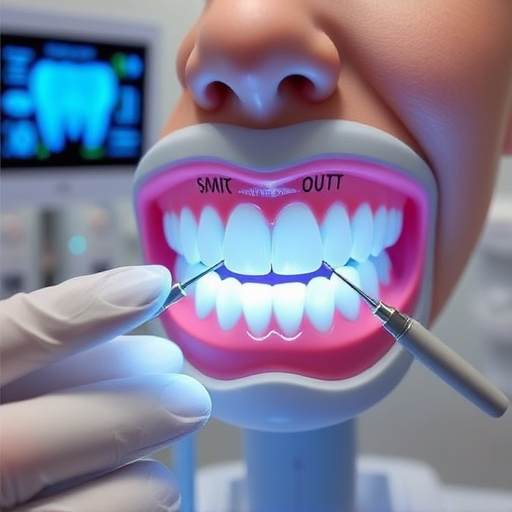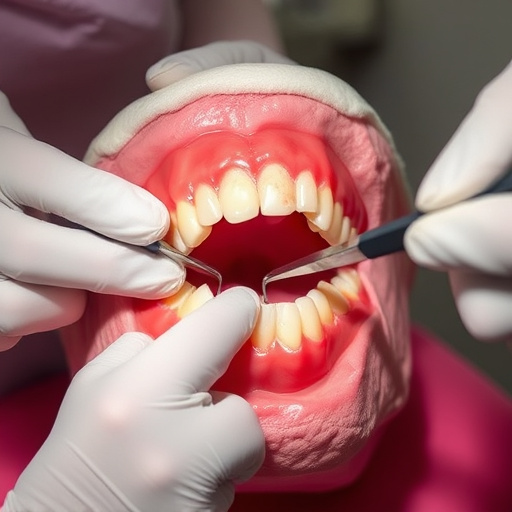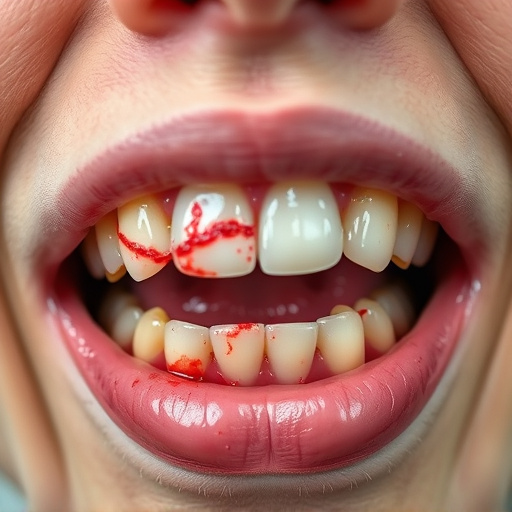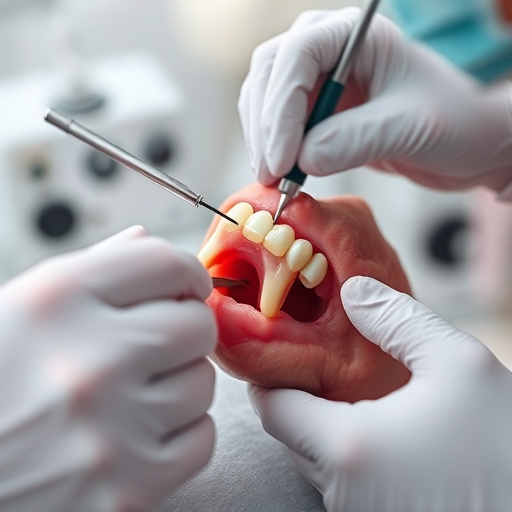Dental bridge replacement is a powerful cosmetic dentistry solution offering both aesthetic and functional benefits by filling gaps left by missing teeth, preventing adjacent tooth drift, and enhancing stability with custom-made ceramic or zirconia bridges. The success of the procedure depends on the strength of adjacent teeth acting as anchors, which can be maintained through regular cleaning and emergency dental care. Choosing the right material like porcelain or zirconia based on oral health history, budget, and needs is crucial for longevity. Regular dental check-ups and cleaning are vital to monitor damage, extend bridge lifespan, and promote optimal oral health.
Dental bridge replacement is a critical procedure that not only restores oral functionality but also maintains the structural integrity of adjacent teeth. This comprehensive guide delves into the intricacies of dental bridge replacement, focusing on the supportive role of neighboring teeth for long-term success. We explore material choices and design considerations to ensure durability and longevity, ultimately enhancing your dental health and aesthetic appeal.
- Understanding Dental Bridge Replacement: A Comprehensive Overview
- The Role of Adjacent Teeth Support in Bridge Success
- Choosing the Right Material and Design for Longevity
Understanding Dental Bridge Replacement: A Comprehensive Overview
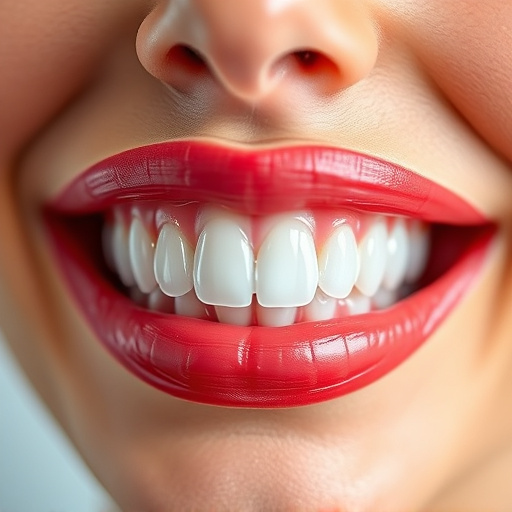
Dental bridge replacement is a highly effective solution for restoring smiles and replacing missing teeth. It involves crafting a custom-made bridge, typically made from ceramic or zirconia, to fill the gap left by one or more missing teeth. This procedure not only enhances the aesthetic appeal of your smile but also supports adjacent teeth, preventing them from shifting or drifting out of place. By integrating the bridge with nearby healthy teeth through crowns or attachments, it provides a stable and long-lasting alternative to traditional dentures.
This comprehensive approach, often recommended by cosmetic dentistry professionals, ensures that the replacement not only looks natural but also feels comfortable and functions similarly to your original teeth. Regular oral exams play a crucial role in monitoring the health of both the bridge and surrounding teeth, allowing for early detection and treatment of any potential issues. With proper care, dental bridges can last for many years, offering a reliable and aesthetically pleasing solution for those seeking to regain their confidence and oral functionality after tooth loss.
The Role of Adjacent Teeth Support in Bridge Success

The success of a dental bridge replacement significantly relies on the support provided by the adjacent teeth. These surrounding teeth act as anchors, holding the bridge in place and ensuring its stability and longevity. Adequate support from adjacent teeth is crucial for maintaining the structural integrity of the bridge, preventing any shifting or misalignment over time. This support system distributes the chewing forces evenly across all teeth, including the bridge, promoting optimal oral health and functionality.
In the realm of comprehensive dental care, considering the strength and health of these adjacent teeth is essential. Proper maintenance through regular teeth cleaning and emergency dental care can strengthen these anchors, thereby enhancing the overall effectiveness of a dental bridge replacement. This collaborative effort ensures that the bridge not only looks natural but also performs effectively for years to come.
Choosing the Right Material and Design for Longevity
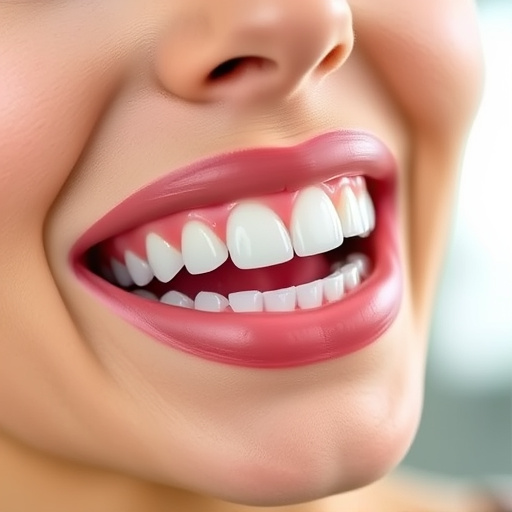
When it comes to dental bridge replacement, choosing the right material and design is paramount for longevity. Modern dentistry offers a variety of options, each with unique advantages. For instance, porcelain bridges are popular due to their aesthetic appeal and ability to match the natural colour and texture of teeth. On the other hand, zirconia bridges provide exceptional strength and durability, making them ideal for areas subject to heavy chewing or biting forces. The choice also depends on the patient’s oral health history, budget, and specific needs.
A comprehensive dental care approach includes regular routine oral exams and teeth cleaning, which play a crucial role in maintaining the integrity of dental bridges. During these visits, dentists can monitor any signs of damage, wear, or deterioration, ensuring timely replacement or repair. This proactive strategy not only extends the lifespan of the bridge but also prevents further complications, promoting optimal oral health in the long term.
Dental bridge replacement, particularly focusing on adjacent teeth support, is a highly effective solution for tooth loss. By understanding the role of these supporting structures, dentists can ensure long-term success and stability. Choosing the right materials and designs, as discussed in this comprehensive overview, plays a vital part in maintaining oral health and aesthetics. Dental bridge replacement continues to evolve, offering patients durable, natural-looking solutions that enhance their overall well-being.








